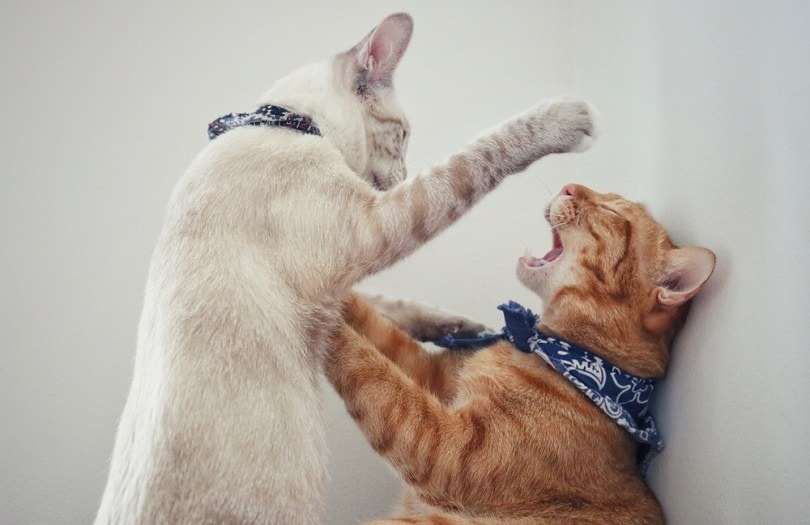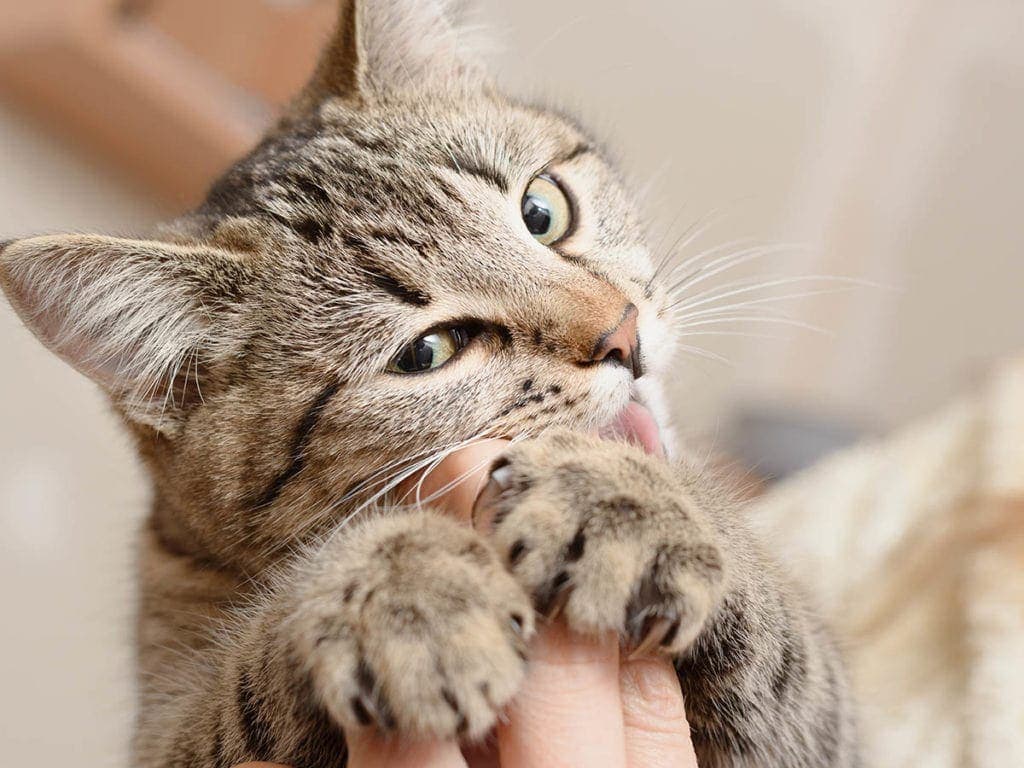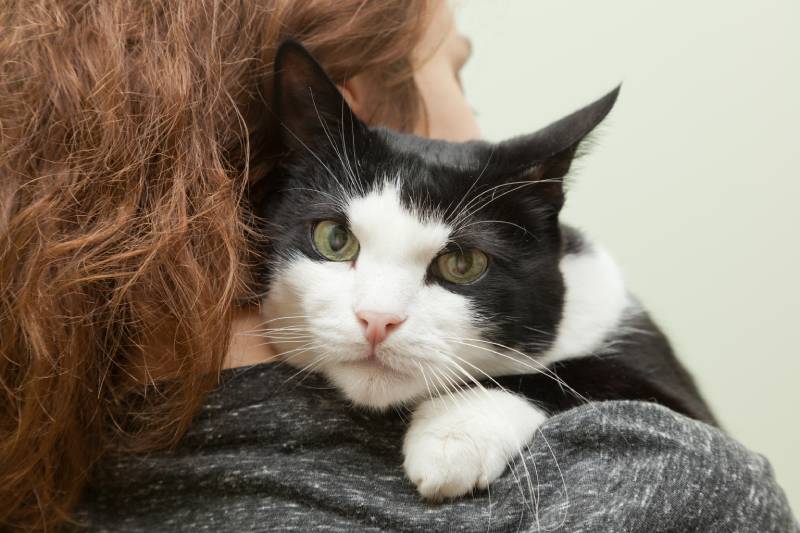VET APPROVED

The information is current and up-to-date in accordance with the latest veterinarian research.
Learn more »Click to Skip Ahead
Sometimes, cats that have been living together harmoniously can suddenly turn on each other and get into fights. It can feel confusing and frustrating to have the peace disrupted in the home.
Fortunately, these battles don’t tend to happen out of nowhere. Something usually triggers them, and finding the triggers can help you resolve and prevent future fights from happening. Here are common reasons that cats may suddenly start to fight with each other.

The 6 Common Reasons Cats Start Fighting All of a Sudden
1. Changes in the Environment
Changes in a cat’s environment can trigger stress, territorial disputes, or insecurity, which may lead to sudden fights with other cats. Felines that feel unsure and unsafe can become more easily agitated and act out unexpectedly. If you notice that your cats are fighting, check for any recent environmental changes that may have triggered agitation.
Changes can be physical, such as moving to a new home or living with new housemates. Changes can also be circumstantial, like being left home alone for longer periods of time or introducing a baby.
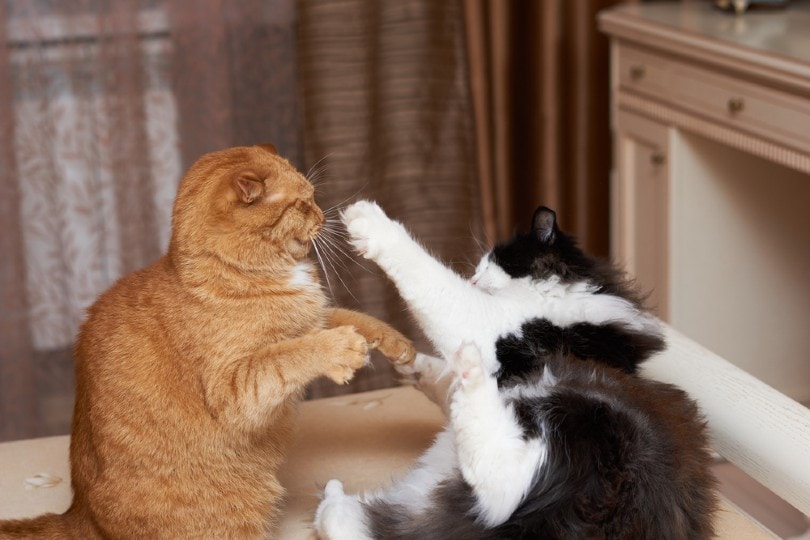
2. Maturity
Cats’ relationships can evolve as they grow and mature. For example, a kitten may get along with an older cat, but once that kitten reaches adulthood, their attitude toward the other cat may change.
Adult cats tend to be more territorial than kittens, so if they feel like they don’t have enough space, they can start to fight each other. Also, as cats reach their senior years, they may become less patient with other cats and act out.
3. Lack of Resources
Cats need to have their own space in order to live in harmony. You should make sure that all your cats have enough space and their own resources, such as water and food bowls, litter trays, resting spots, beds, perches, scratching posts, and toys. If necessary, bring in more cat trees, hammocks, or perches. These items can create healthy space and boundaries between cats so they’re less likely to come across each other and get into a fight. The formula one per cat plus one extra in different locations is usually very helpful.
It can also be helpful to separate your cats during mealtimes so they can feel completely relaxed while eating and not have to worry about their food getting stolen.
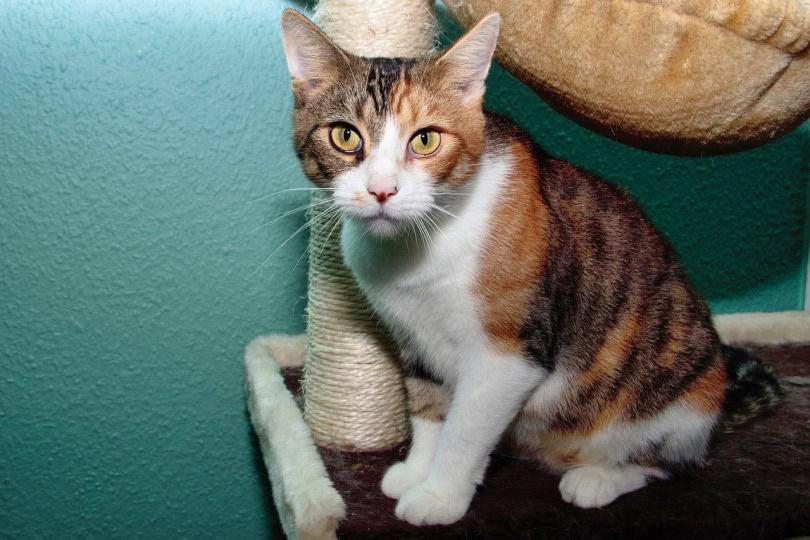
4. A Trip to the Vet
The primary way cats communicate is through smell, and if one of them has recently taken a trip to the vet, they may smell like the vet office instead of their normal scent. Because the scent has changed, the other cats may not immediately recognize the returning cat.
To help with this, you can keep the returning cat enclosed in a separate room for 12 hours or overnight. Over this time period, the cat will groom itself and return to its normal scent. You can also help by petting your cat, but be careful if they are injured, sick, or have recently had surgery.
5. Health Issues
If your cat is experiencing any pain or discomfort from an underlying health issue, they may start to act more aggressively or be easily agitated. Even changes in hormones, such as hyperthyroidism, can make cats feel more irritated and uncomfortable.
Sudden changes in behaviors can point to internal health problems. So, you might want to talk to a veterinarian to see if there’s a physical cause that’s affecting your cat’s behavior.

6. Playtime Gone Wrong
Every once in a while, playtime can go wrong between cats that usually get along. One cat may have acted a little too aggressively and crossed a boundary that led to a fight.
These types of interactions are normal, and they often resolve themselves. Sometimes, felines just need to express themselves and sort out boundaries on their own. However, if the scuffles start to become more aggressive and more frequent occurrences, it’s important to intervene to keep both cats safe.

How to Safely Break Up a Cat Fight
There are instances where cats need to be broken up for the sake of safety. The best way to break up a fight is to intervene before it happens. These are signs of aggression that cats may show when they’re getting ready to fight:
- Tail thrashes back and forth
- Ears upright and pointed slightly forward
- Dilated pupils
- Body is in a pouncing position
- Raising of hair along their back and tail fluffed up
- Directly facing opponent
- Growling, howling, or yowling
- Baring teeth and claws are out
If you see any of these signs of aggression, act right away and try to distract the cats. You can make a loud noise by clapping your hands or shaking a can filled with coins. Spraying around water with a plastic spray bottle can cause cats to try to escape the scene. If the cats are engaging in a fight, you may need to use more water to separate them.
The last thing you want to do is reach in and separate the cats on your own, as this can be unsafe. Also, make sure not to hit or chase any of the cats; this will ultimately sever any trust that they have with you.
If the fights become frequent, take your cats to the veterinarian for a checkup to rule out any physical conditions that are triggering aggressive behaviors. You can also work with a cat behaviorist to figure out how to create a harmonious living space for you and your kitties.

Conclusion
Cat fights between two cats that have been living together happily can be very distressing. There’s usually a trigger that causes these fights, such as changes in the environment or an underlying health condition. If you can’t quite figure it out, there are plenty of animal specialists who can help you. Once you learn what factors trigger fights, you can do your best to make adjustments to prevent any future battles.
Featured Image Credit: RJ22, Shutterstock
